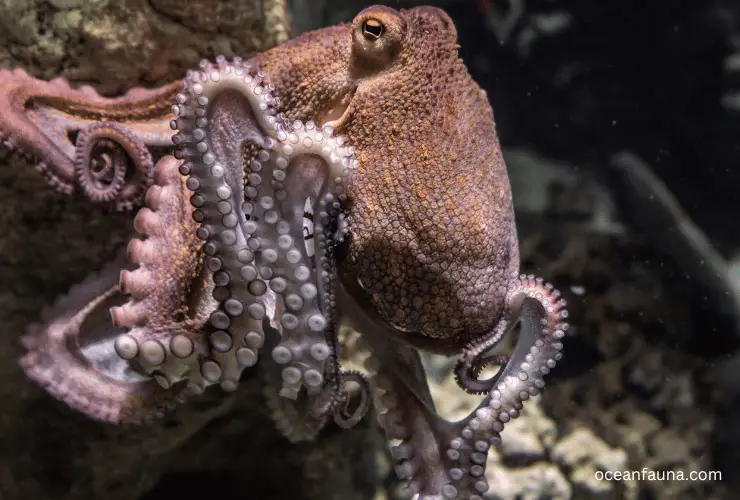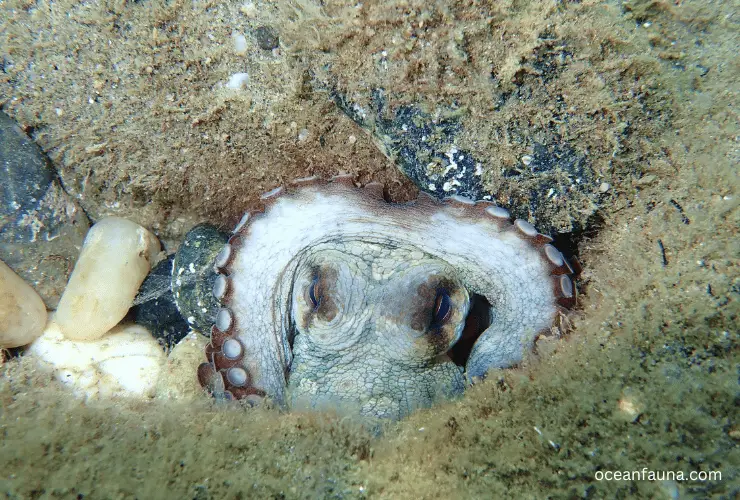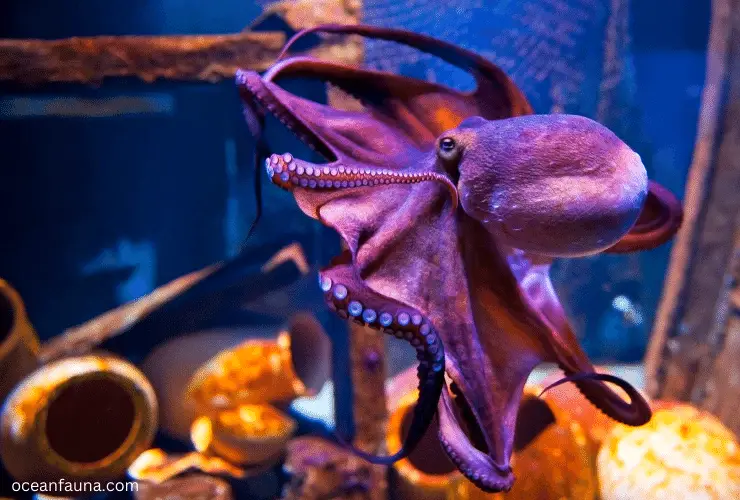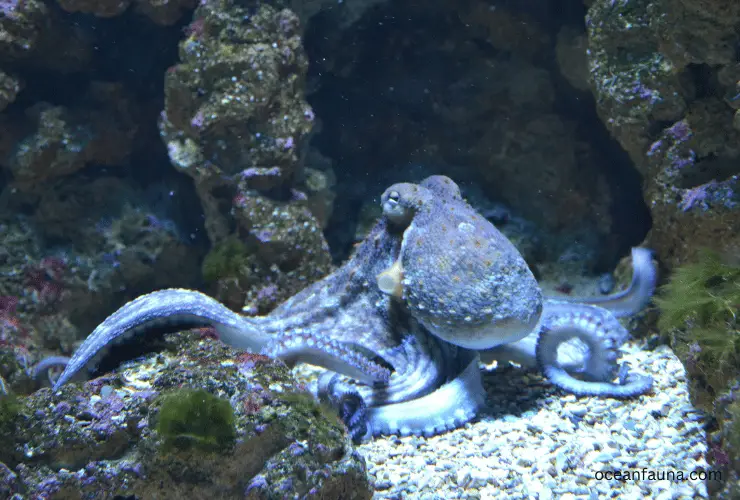Octopuses are known for their incredible ability to change their shape and fit into tight spaces. However, this raises the question of how they maintain their structure without bones. Unlike most animals, octopuses do not have a traditional skeletal system.
So far, it’s definite that you got more curious and want to know more about it. That’s why scroll down to know all the details regarding this.
Do Octopus Have Bones?
No, octopuses do not have bones. Octopuses are invertebrates, which means they lack a skeleton. Instead of bones, they have a soft, flexible body with well-developed muscle tissue that allows them to contort their bodies and move their arms.
Instead, they rely on their well-defined muscle tissue and tough skin for overall shape and movement. There are some suborders of octopuses, such as the Cirrina, that have a semi-rigid, shell-like internal structure in the head. But this is not found in all octopuses.

In the absence of bones, the octopus uses its muscular hydrostatic system, which is similar to our tongues, to maintain its form and perform highly controlled movements.
They also have the ability to control their buoyancy by taking in and releasing water, which helps them to swim and move in their underwater environment.
Despite being boneless, octopuses exhibit impressive versatility and mobility, capable of navigating various tasks and adapting to their surroundings.
Why Don’t Octopus Have Bones?
Invertebrates, including octopuses, lack any form of bones or spinal structure. While this would be a hindrance to many animals, the octopus utilizes it to its advantage.
Its boneless nature allows it to squeeze into tight spaces, like a mouse, and contort its body in remarkable ways. The octopus’s flexibility allows it to hide and access food in tiny crevices and cracks. They are even known to escape from aquariums.

Living in the ocean, the octopus doesn’t require bones. Instead, it uses its extreme muscle mass in its arms, along with buoyancy, to move, swim, and manipulate heavy objects.
The arm muscles work similarly to the human tongue, which is also boneless, but still strong and stretchable without strain.
How Does an Octopus Move Without Bones?
The answer lies in their soft, flexible bodies and well-developed muscle tissue. Octopuses have a complex network of muscles throughout their bodies, which they use to change shape and move.
These muscles allow the octopus to contort its body into tight spaces, and to manipulate objects using its many arms. The arm muscles of an octopus work similarly to the human tongue, which is also boneless but still strong and stretchable without strain.
The muscles in the octopus’s arms can independently contract and relax, giving the animal great control over its movement. Additionally, the octopus’s skin is tough and helps to maintain its overall shape and structure.
Another factor that allows octopuses to move without bones is their ability to control their buoyancy. Octopuses have the ability to take in and release water, allowing them to regulate their density and float or sink as needed. This helps them to swim and move more easily in their underwater environment.
Advantages of Not Having Bones
The lack of bones is actually a benefit for octopuses, allowing them to be highly flexible and maneuver into the smallest of spaces for protection from predators and to access challenging prey locations. This malleability makes the octopus a truly unique creature in the animal kingdom.
How Does Octopus Keep Their Shape Without Any Bones?
You may expect that an octopus, without bones, would be a shapeless blob unable to move. However, this is far from the truth.
The octopus has another anatomy that allows it to maintain its form and move its numerous arms. Its well-defined muscles provide its overall shape, while its tough skin also plays a role in its structure.
There are some exceptions among the suborders of the octopus family, such as the Cirrina, that have a semi-rigid internal shell-like structure. This can be found in the head and supports the creature’s lateral fins, which are used for swimming.

This internal structure is similar to cartilage and is mineralized like bone. The only hard part of an octopus is its beak, located in the center of its tentacles, which it uses as a mouth.
The beak acts like jaws, cutting through shells to inject its toxins into prey and to introduce digestive juices. The beak is made of chitin, a strong material found in the exoskeleton of many insects.
FAQs
Do octopuses have a bone in their beak?
Yes, but not in the traditional sense. Octopuses have a hard, chitin-made beak that they use to crush their food. It’s surrounded by muscles referred to as a buccal mass, which operates similarly to the cartilage that composes our nails.
Do octopuses have teeth like bones?
No, they do not have teeth like bones. Instead, they have a sharp, hooked beak that they use to break down their food. They do have a radula, similar to a tongue, which is lined with tiny, hooked denticles that serve as a form of small teeth for breaking down their prey before ingestion.
Conclusion
Octopuses do not have bones. Instead, they have a soft, flexible body that allows them to move, swim, and escape danger in their environment.
Their unique muscle structure and small amounts of cartilage provide some structure and support, but they rely primarily on their mantle for protection and movement. The boneless structure of octopuses is an important adaptation that has allowed them to thrive in their ocean habitat.
Hopefully, this article has provided you with some interesting information about octopuses. If you found this post informative, don’t hesitate to continue exploring and discovering the many quirks of these fascinating creatures.

